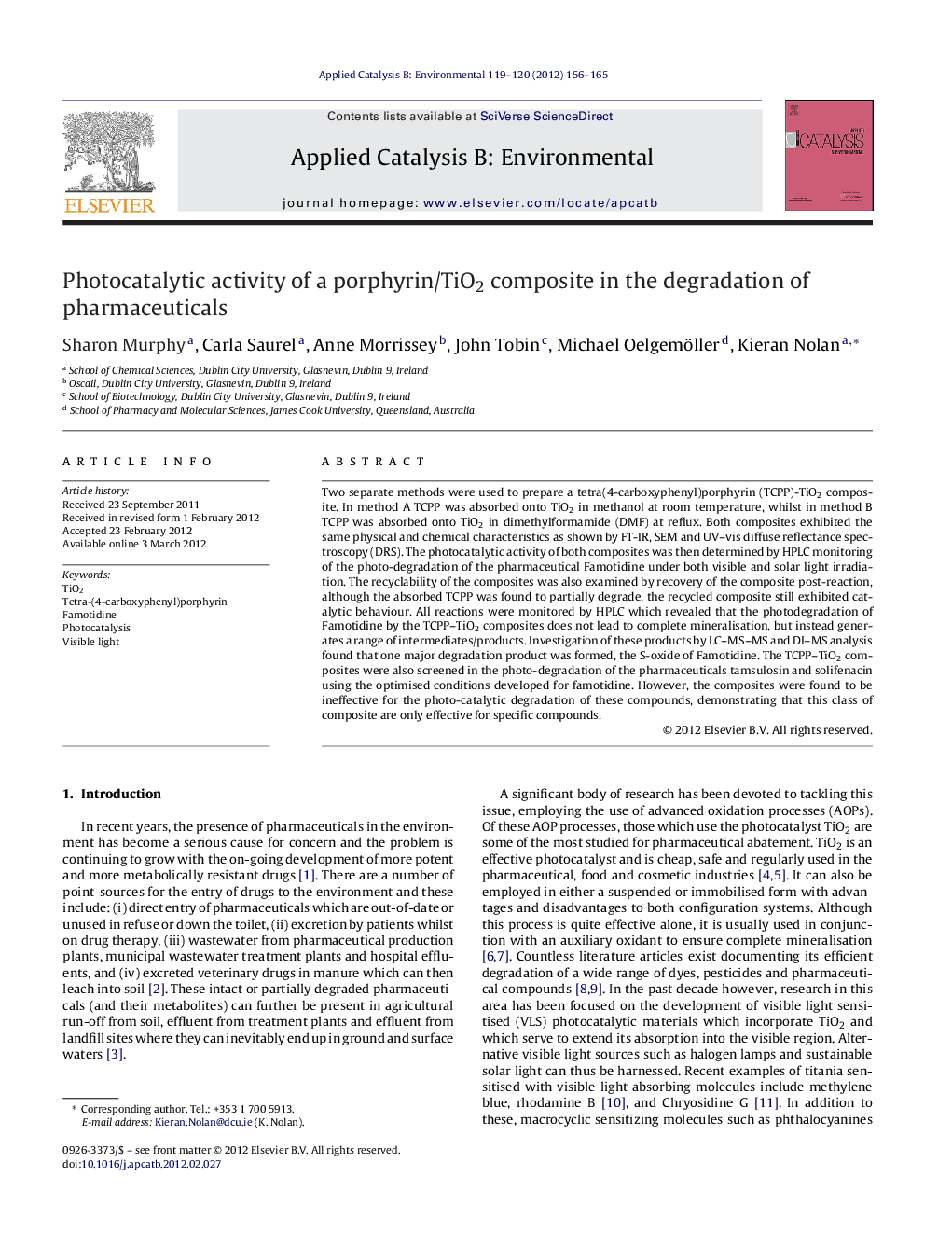| Article ID | Journal | Published Year | Pages | File Type |
|---|---|---|---|---|
| 46648 | Applied Catalysis B: Environmental | 2012 | 10 Pages |
Two separate methods were used to prepare a tetra(4-carboxyphenyl)porphyrin (TCPP)-TiO2 composite. In method A TCPP was absorbed onto TiO2 in methanol at room temperature, whilst in method B TCPP was absorbed onto TiO2 in dimethylformamide (DMF) at reflux. Both composites exhibited the same physical and chemical characteristics as shown by FT-IR, SEM and UV–vis diffuse reflectance spectroscopy (DRS). The photocatalytic activity of both composites was then determined by HPLC monitoring of the photo-degradation of the pharmaceutical Famotidine under both visible and solar light irradiation. The recyclability of the composites was also examined by recovery of the composite post-reaction, although the absorbed TCPP was found to partially degrade, the recycled composite still exhibited catalytic behaviour. All reactions were monitored by HPLC which revealed that the photodegradation of Famotidine by the TCPP–TiO2 composites does not lead to complete mineralisation, but instead generates a range of intermediates/products. Investigation of these products by LC–MS–MS and DI–MS analysis found that one major degradation product was formed, the S-oxide of Famotidine. The TCPP–TiO2 composites were also screened in the photo-degradation of the pharmaceuticals tamsulosin and solifenacin using the optimised conditions developed for famotidine. However, the composites were found to be ineffective for the photo-catalytic degradation of these compounds, demonstrating that this class of composite are only effective for specific compounds.
Graphical abstractIndoor (left) and solar photocatalytic reactions (right) showing the degradation of famotidine using TCPP–TiO2 composite materials. TCPP–TiO2-A (●) and -B (♦), photolysis (■) P-25 TiO2 (▴). [TCPP–TiO2] or [P-25 TiO2] = 0.031 g, [FAM] = 0.083 mM.Figure optionsDownload full-size imageDownload as PowerPoint slideHighlights► Porphyrin/TiO2 composite prepared via an adsorbed method of preparation. ► Porphyrin/TiO2 composite tested on famotidine, tamsulosin and solifenacin. ► Elimination of famotidine with visible light superior than P-25 TiO2. ► Composite was ineffective for tamsulosin and solifenacin. ► HPLC traces of famotidine photocatalytic experiments shows mineralisation is not occurring.
